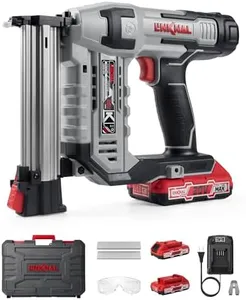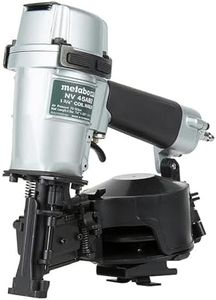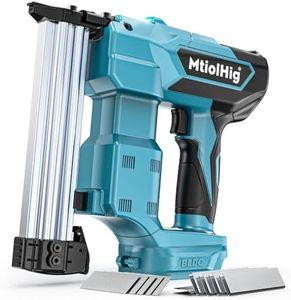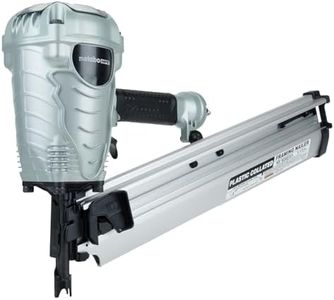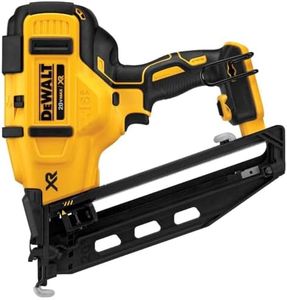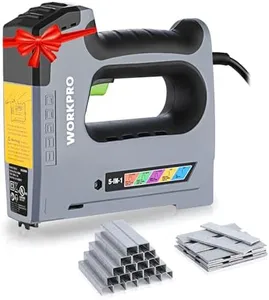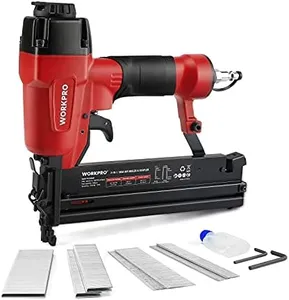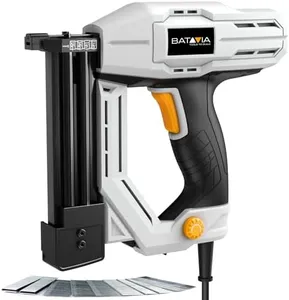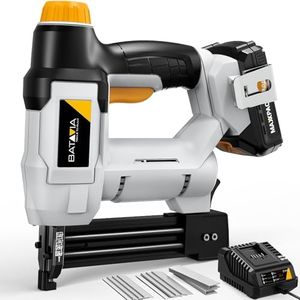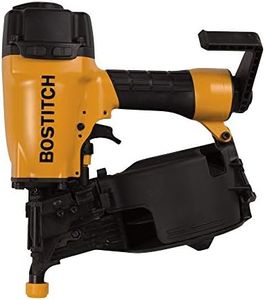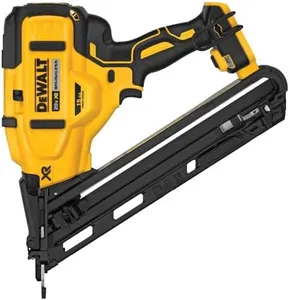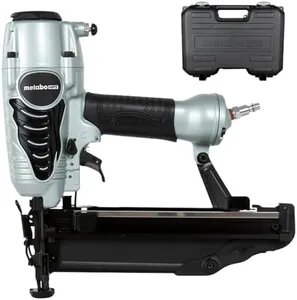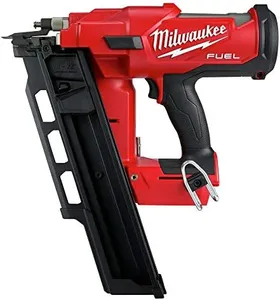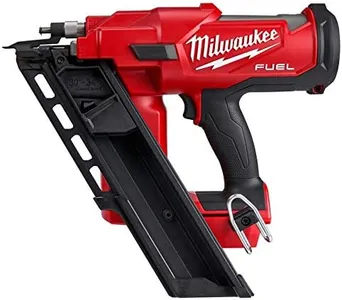10 Best Nail Guns 2025 in the United States
Our technology thoroughly searches through the online shopping world, reviewing hundreds of sites. We then process and analyze this information, updating in real-time to bring you the latest top-rated products. This way, you always get the best and most current options available.

Our Top Picks
Winner
DEWALT DCN680B 20V MAX* XR® 18 GA Cordless Brad Nailer (Tool Only)
Most important from
2501 reviews
The DEWALT DCN680B 20V MAX XR 18 Gauge Cordless Brad Nailer is a battery-powered tool designed for those who want the freedom of cordless operation without needing a compressor or gas cartridges. Its brushless motor helps extend battery life and tool durability, which is great if you plan on using it for longer projects. It handles 18-gauge brad nails from 5/8" up to 2-1/8" in length, making it suitable for fine woodworking, trim, and cabinetry work. The magazine holds up to 110 nails, so you won't have to reload often. Weighing just over 6 pounds, it strikes a good balance between being solid yet manageable for extended use, and the adjustable belt hook adds convenience.
Safety and usability are well thought out: it includes a low nail lockout to prevent dry firing, a tool-free depth adjustment for precise nail placement, and easy jam clearing without extra tools. LED lights assist with visibility in dim areas and help diagnose tool status. The tool is sold without the battery and charger, so you’ll need to have compatible DEWALT 20V batteries or buy them separately, which can add to the initial cost. Additionally, if you occasionally need larger nails or a different gauge, this will not cover those needs as it focuses on 18 gauge brads.
This nailer represents a solid choice for hobbyists and professionals seeking a reliable, cordless brad nailer with useful features that improve accuracy and ease of use.
Most important from
2501 reviews
Metabo HPT Roofing Nailer, Pro-preferred Pneumatic Power Nailers, Ideal for Asphalt Roofing Shingles, 16 Degree 7/8″ to 1-3/4″ Roofing Nails, NV45AB2
Most important from
1827 reviews
The Metabo HPT Roofing Nailer is a pneumatic tool, making it a powerful and efficient option for heavy-duty tasks like installing asphalt roofing shingles and insulation boards. Its ability to drive up to 3 nails per second with a power range of 70-120 PSI ensures consistent and reliable performance. It is compatible with 7/8″ to 1-3/4″ roofing nails, which makes it versatile for various roofing jobs.
One of its standout features is the tool-less depth of drive adjustment, allowing for precise nailing and flush driving, which is particularly user-friendly. The 16-degree magazine can hold up to 120 nails, reducing downtime caused by frequent reloading. Weighing only 5.7 lbs, it is lightweight and ergonomically designed, making it easy to maneuver and handle, even during extended use.
The side-loading magazine and quick driving system further enhance its convenience and efficiency. Backed by a 5-year warranty and a reputation for reliability and durability, the Metabo HPT Roofing Nailer is a solid choice for professionals looking for a dependable and efficient roofing tool.
Most important from
1827 reviews
Buying Guide for the Best Nail Guns
Choosing the right nail gun can make your projects easier and more efficient. Nail guns come in various types and sizes, each designed for specific tasks. Understanding the key specifications will help you select the best nail gun for your needs. Consider the type of projects you will be working on, the frequency of use, and the materials you will be nailing. Here are some important specs to consider when choosing a nail gun.FAQ
Most Popular Categories Right Now
